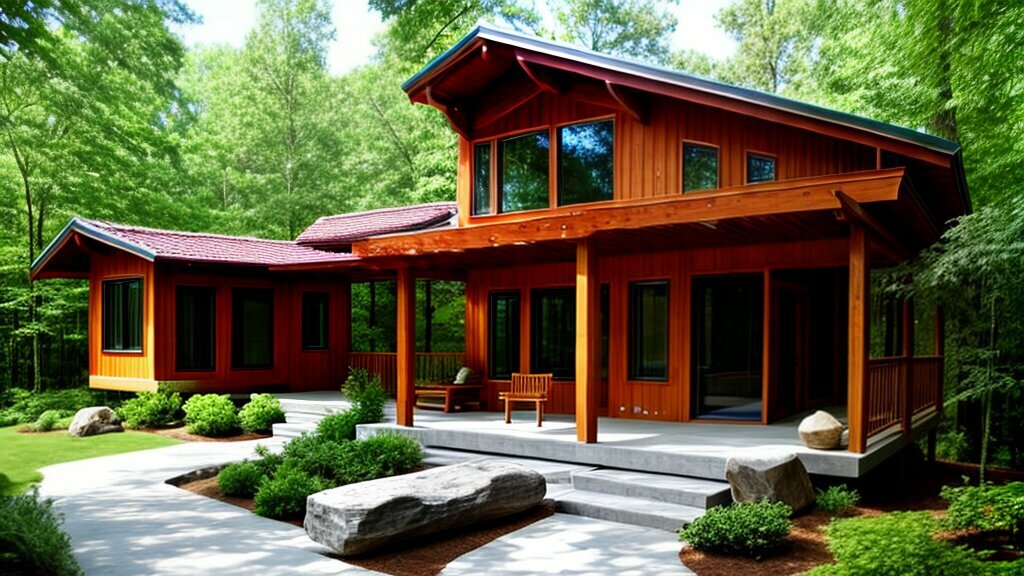Indigenous Knowledge and Sustainable Architecture: A Global Perspective
As the world continues to grapple with the effects of climate change, sustainable architecture has emerged as a crucial tool for mitigating its impact. At the heart of this movement lies the integration of indigenous knowledge with sustainable design and eco-friendly construction practices.
Indigenous knowledge refers to the cumulative body of knowledge and skills developed by communities over generations through direct contact with the environment. This knowledge is deeply rooted in the natural world and reflects a holistic approach to sustainability that prioritizes long-term environmental health over short-term economic gain.
The integration of indigenous knowledge with sustainable architecture represents a global shift towards a more environmentally conscious future. It acknowledges the crucial role that traditional building techniques, culturally sensitive architecture, and community engagement play in achieving sustainable building practices.
Key Takeaways:
- Indigenous knowledge is a crucial component of sustainable architecture.
- Sustainable architecture prioritizes long-term environmental health over short-term economic gain.
- The integration of indigenous knowledge with sustainable architecture represents a global shift towards a more environmentally conscious future.
Traditional Building Techniques and Culturally Sensitive Architecture
Effective sustainable architecture takes into account both traditional building techniques and cultural sensitivities, in addition to green building practices. By incorporating these elements into the construction process, architects can promote the preservation of indigenous knowledge and create eco-friendly buildings that harmonize with the local environment.
Utilizing traditional building techniques not only preserves cultural heritage but also contributes to sustainable architecture. For example, in many parts of the world, mud brick construction has been used for centuries due to its thermal properties, low cost, and availability. Architects can implement these methods and introduce innovations to create modern buildings that effectively manage heating and cooling without relying on energy-consuming systems.
Cultural sensitivities play a vital role in promoting sustainable architecture. Architects must respect cultural practices and beliefs and design buildings that harmonize with the local environment. One example of culturally sensitive architecture is the design of the Royal Palace in Phnom Penh, Cambodia. The structure fuses traditional Khmer architecture and French colonial influences, creating a building that reflects the history and culture of Cambodia while incorporating modern sustainable design elements.
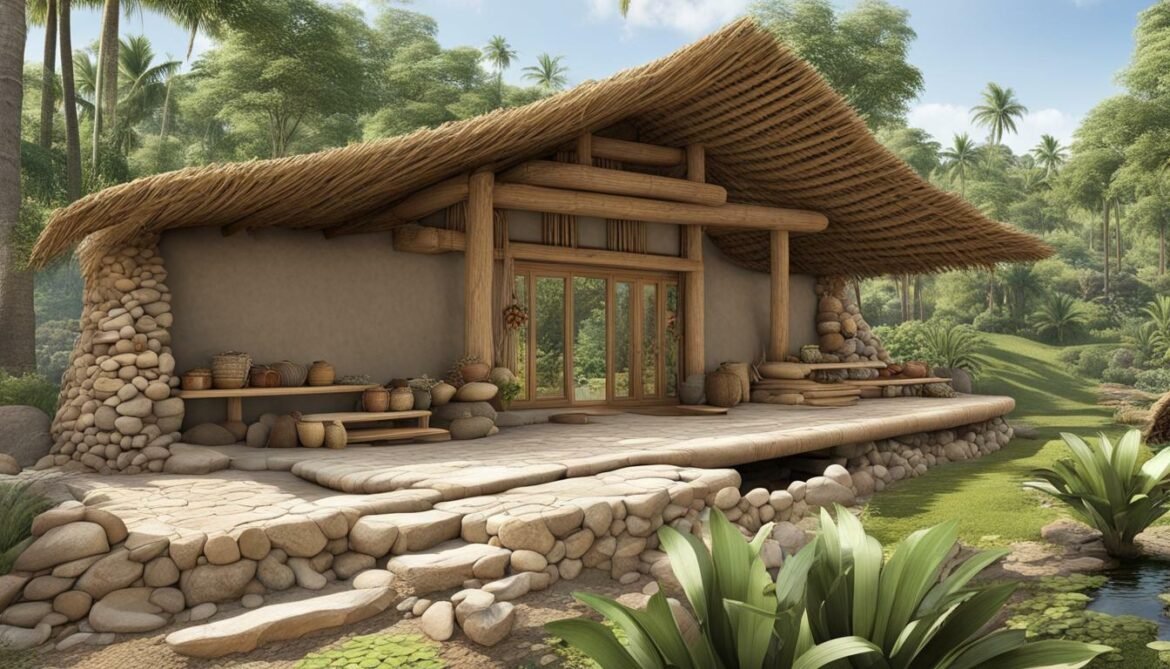
Green building practices such as using locally sourced materials and creating buildings that are energy-efficient and recyclable are also important aspects of sustainable architecture. Not only do they reduce the environmental impact of construction, but they also contribute to the well-being of surrounding communities, by creating healthier and more comfortable living and working environments.
Traditional Building Techniques and Culturally Sensitive Architecture in Action
The use of traditional building techniques and culturally sensitive architecture is evident in the design of the Exploratorium museum in San Francisco, California. The museum, which is built on a pier in San Francisco Bay, features a roof structure that incorporates traditional shipbuilding techniques. The design also integrates sustainable elements, such as a natural ventilation system to reduce energy consumption.
Another example is the Community House in Pemba, Mozambique, designed by the nonprofit group I-Beam. The building uses traditional mud brick construction, and the design incorporates cultural elements, such as an open courtyard for community gatherings.
In conclusion, the integration of traditional building techniques and cultural sensitivities is key to promoting sustainable architecture. Architects who implement these practices can contribute to environmentally conscious construction and preservation of indigenous knowledge. By embracing green building practices and respecting cultural traditions, sustainable architecture can promote a healthier planet and communities.
Indigenous Materials and Sustainable Building Materials
One significant aspect of sustainable architecture is the use of indigenous materials. Indigenous materials are those that are found locally, sourced sustainably, and are culturally significant to the community. These materials have been used for centuries and are an essential part of traditional building techniques. Sustainable building materials, on the other hand, are those that have a minimal impact on the environment and promote ecological balance. Using both indigenous and sustainable building materials contributes to green building practices, reduces the carbon footprint of construction, and helps preserve natural resources.
The use of indigenous materials in sustainable architecture is not only environmentally friendly, but it also helps preserve the culture and identity of local communities. For example, in Kenya, the use of mud bricks and thatched roofing is common practice in sustainable construction. This allows communities to preserve their cultural heritage while also contributing to eco-friendly construction practices.
| Indigenous Material | Sustainable Building Material |
|---|---|
| Bamboo | Recycled Plastic Lumber |
| Adobe | Recycled Steel |
| Stone | Bio-Glass |
There are various sustainable building materials available for use, such as recycled steel and bio-glass, that have a minimal impact on the environment. These materials can also be combined with indigenous building materials to create a unique and sustainable structure.
Using sustainable building materials also promotes water and energy conservation. For example, using insulation made from recycled materials helps reduce heating and cooling costs, while rainwater harvesting systems reduce water wastage.

Overall, the use of both indigenous and sustainable building materials in sustainable architecture is essential in achieving green building practices and preserving cultural heritage. By utilizing these materials, we can reduce the carbon footprint of construction, promote ecological balance, and preserve natural resources.
Renewable Energy and Sustainable Architecture
Renewable energy sources are becoming increasingly popular in sustainable architecture, with the aim of reducing carbon emissions and achieving more environmentally friendly construction practices. By harnessing the power of natural resources, sustainable architecture can significantly reduce its impact on the environment.
Incorporating renewable energy sources such as solar power, wind turbines, and geothermal energy can provide sustainable buildings with a reliable and cost-effective source of energy. Solar panels, for instance, can be installed on rooftops or facades to generate electricity, reducing the reliance on non-renewable energy sources. Similarly, wind turbines can be integrated into the design of buildings to generate wind energy, which can be stored and used to power the building’s electricity.
Geothermal energy is another renewable energy source that can be utilized in sustainable architecture. By tapping into the heat generated by the earth, sustainable buildings can regulate their indoor temperature without relying on energy-intensive heating and cooling systems. This helps to reduce the building’s energy consumption and, in turn, lowers its carbon footprint.
Integrating renewable energy sources into sustainable architecture is an important step towards achieving more environmentally friendly construction practices. By reducing the reliance on non-renewable energy sources, sustainable buildings can effectively combat climate change and contribute to a more sustainable future.

Community Engagement and Sustainable Architecture
Community engagement is a crucial component of sustainable architecture and eco-friendly construction. When local communities are involved in sustainable building projects, they develop a sense of ownership and pride in the development, leading to better maintenance and longevity of the structure. Through community engagement, architects and builders can incorporate indigenous knowledge and cultural traditions into the design, making the project both sustainable and culturally sensitive.
As part of the community engagement process, architects and builders should actively seek the opinions and input of local residents. This can involve holding public meetings or creating online forums to encourage community members to provide feedback on the project design. By involving the community in the decision-making process, the final project design can better meet the community’s needs, values, and aspirations, ultimately leading to greater satisfaction and support for the project.
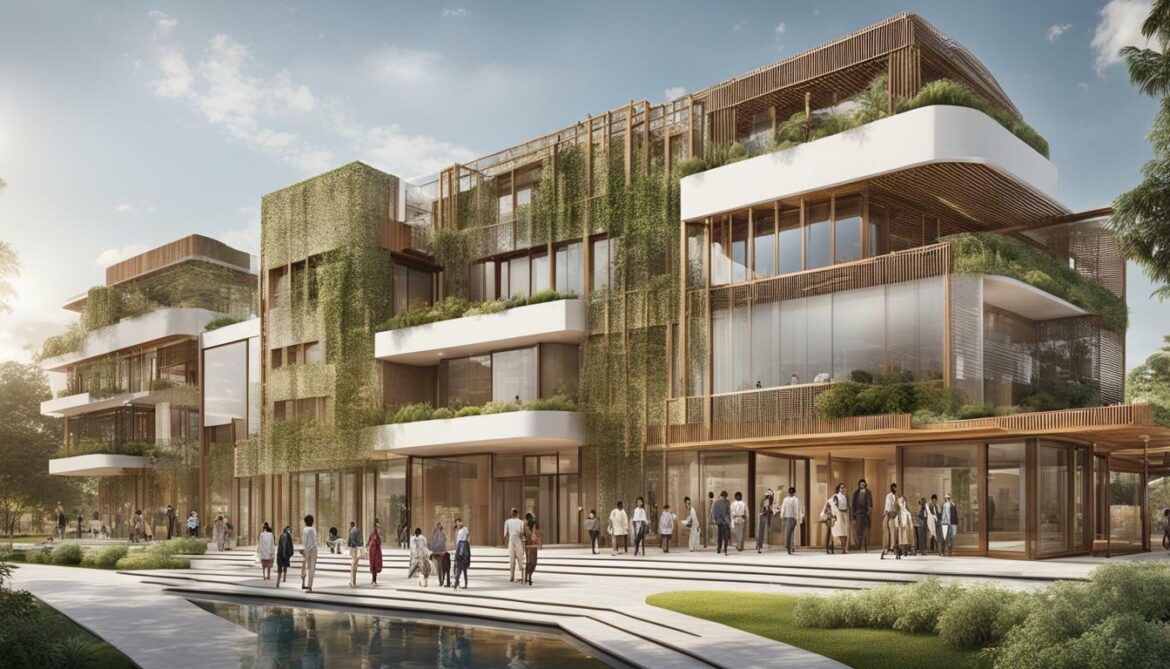
Successful community engagement involves building trust and strong relationships with the community. This can involve establishing partnerships with local organisations, hiring local labourers, and prioritising local materials. Furthermore, meaningful community engagement should continue throughout the lifespan of the project, ensuring that the needs and opinions of the community are continually taken into account.
Ultimately, community engagement is essential to creating sustainable architecture that embodies both environmental and cultural values. By working collaboratively with local communities, architects and builders can create projects that are both eco-friendly and culturally sensitive, ensuring a more sustainable future for all.
Case Studies: Indigenous Knowledge in Practice
There are several excellent examples of successful projects that integrate indigenous knowledge and sustainable architecture. One such project is the Nk’Mip Desert Cultural Centre in Osoyoos, British Columbia, which uses traditional building techniques to showcase the culture and history of the Osoyoos Indian Band.
The centre’s design incorporates eco-friendly construction practices, such as using locally sourced materials and maximizing natural light. The goal was to create a building that respects the environment and pays homage to the traditions of the local community.
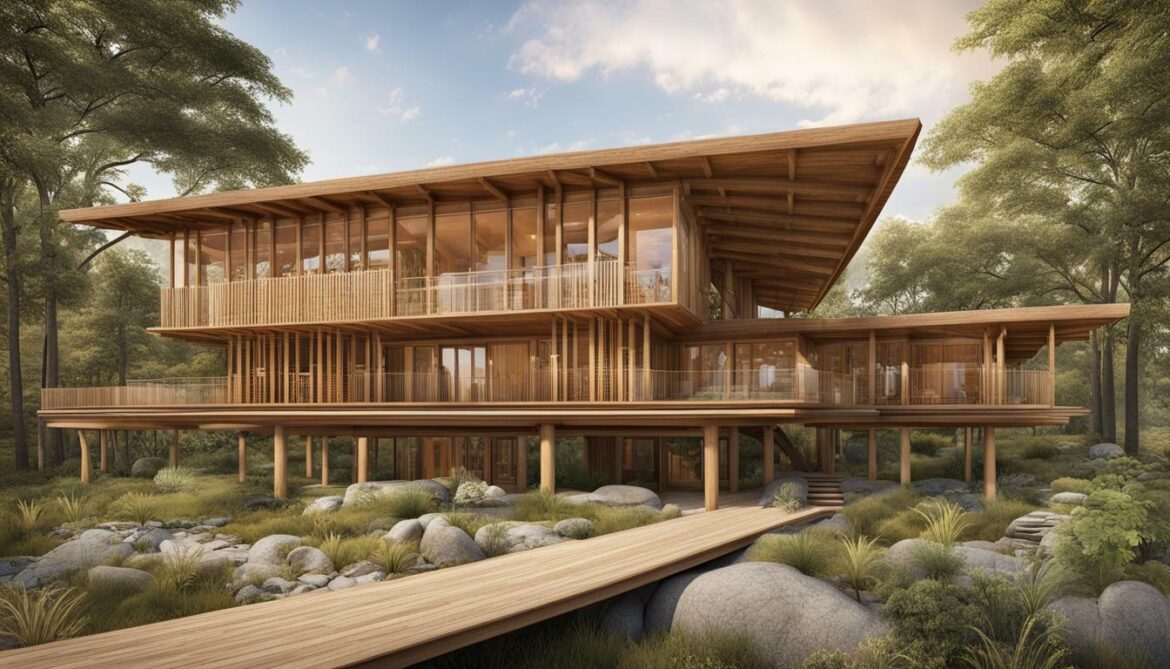
Another example is the Biesbosch Museum in the Netherlands, which was designed to blend in with the surrounding landscape and minimize its impact on the environment. The museum was constructed using sustainable building materials and renewable energy sources, such as solar panels and a ground source heat pump.
The design incorporates local building traditions and the history of the area, as well as showcasing innovative sustainable design practices. The result is a building that is not only beautiful and functional but also environmentally responsible.
Finally, the Earthship Biotecture project in Taos, New Mexico, demonstrates how indigenous knowledge can be used to create sustainable, self-sufficient homes. These homes are constructed using recycled materials, such as old tires and glass bottles, and rely on renewable energy sources, such as solar and wind power.
The design of the Earthship homes incorporates traditional building techniques, such as passive solar heating and natural ventilation, to create a comfortable living environment without relying on fossil fuels. These homes are not only environmentally friendly but also affordable and accessible to people around the world.
These case studies demonstrate the potential for indigenous knowledge to be integrated with sustainable architecture in innovative and impactful ways. By combining traditional building techniques with modern eco-friendly construction practices, we can create buildings that respect the environment and honour the cultures of local communities.
The Future of Indigenous Knowledge and Sustainable Architecture
As the world moves towards a more sustainable future, the integration of indigenous knowledge and sustainable architecture has the potential to play a vital role. There is a growing awareness of the importance of preserving indigenous knowledge and culture, and how it can be utilized in conjunction with sustainable design and eco-friendly construction practices.
The future of indigenous knowledge and sustainable architecture looks promising, as more architects, builders and developers are recognizing the value of working with local communities and their traditional building techniques. By utilizing indigenous materials and renewable energy sources, as well as involving the community in the construction process, we can create more sustainable and environmentally conscious buildings.
One potential area for further advancement in sustainable design is the use of natural ventilation systems and passive solar design, which can reduce energy consumption and improve indoor air quality. Additionally, incorporating nature-based designs, such as green roofs and living walls, can improve the overall sustainability and aesthetic appeal of buildings.
It is important to acknowledge the challenges that may arise in incorporating indigenous knowledge into sustainable architecture, such as the need for careful consideration and respect for cultural practices and traditions. However, with open communication and collaboration between all parties involved, these challenges can be overcome and the benefits of the integration of indigenous knowledge and sustainable architecture can be realized.
In conclusion, the future of indigenous knowledge and sustainable architecture holds great potential for creating more sustainable and environmentally conscious buildings. By incorporating traditional building techniques, utilizing indigenous materials and renewable energy sources, and involving the community in the construction process, we can move towards a more sustainable future one building at a time.
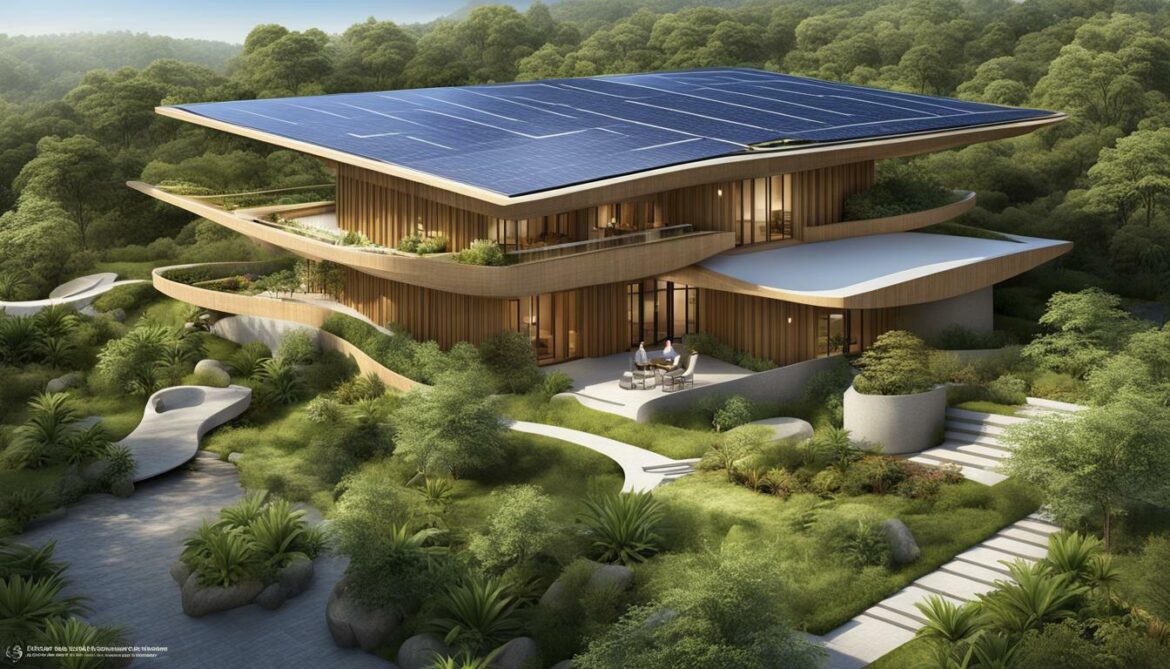
Conclusion
Incorporating indigenous knowledge with sustainable architecture is crucial to achieving a more environmentally conscious future. From traditional building techniques to utilizing indigenous materials and renewable energy sources, sustainable design and eco-friendly construction practices play a significant role in preserving local cultures and reducing the carbon footprint.
Community engagement is equally essential in sustainable architecture projects. Including the local communities in the decision-making process and empowering them to participate in the construction process contributes to the success of eco-friendly projects in the long run.
The Future of Indigenous Knowledge and Sustainable Architecture
As we look ahead, indigenous knowledge has a crucial role to play in sustainable architecture and design. By continuing to integrate traditional techniques with modern practices, we can create eco-friendly structures that not only reduce the impact on the environment but also contribute to the preservation of local cultures and traditions.
There is a significant potential for further advancements in sustainable design and eco-friendly construction practices. By harnessing the power of renewable energy sources and utilizing sustainable building materials, we can create a greener future for generations to come.
Overall, the integration of indigenous knowledge with sustainable architecture is a powerful tool for fostering environmental sustainability and preserving cultural heritage. Through community engagement, innovative design, and collaborative efforts, we can create a better, more sustainable world.
FAQ
Q: What is indigenous knowledge and its relation to sustainable architecture?
A: Indigenous knowledge refers to the wisdom, expertise, and practices that have been passed down through generations within specific cultures. When integrated with sustainable architecture, it emphasizes the use of eco-friendly construction techniques and materials, promoting a more sustainable and environmentally conscious approach to design.
Q: How do traditional building techniques contribute to sustainable architecture?
A: Traditional building techniques have been developed over centuries and are often rooted in sustainable practices. These techniques utilize locally available materials and emphasize the efficient use of resources. By incorporating them into modern architectural designs, we can reduce the ecological footprint of construction and preserve indigenous knowledge.
Q: What are indigenous materials, and how do they contribute to sustainable building practices?
A: Indigenous materials are locally sourced materials that reflect the natural resources of a region. These materials include substances such as adobe, bamboo, or thatch. By utilizing indigenous materials, we can reduce the need for resource-intensive manufacturing processes and minimize transportation costs, making sustainable architecture more accessible.
Q: How does renewable energy play a role in sustainable architecture?
A: Renewable energy sources, such as solar power or wind energy, provide opportunities to reduce the reliance on non-renewable resources. By incorporating renewable energy systems into architectural designs, buildings can produce their own clean energy, making them more self-sufficient and environmentally friendly.
Q: Why is community engagement important in sustainable architecture?
A: Community engagement is crucial in sustainable architecture as it fosters a sense of ownership and collaboration. By involving local communities in the design and construction process, projects can better address the unique needs and concerns of the area, ensuring the long-term success and sustainability of the building.
Q: Can you provide examples of indigenous knowledge in practice?
A: Certainly! One example is the use of traditional building techniques, like rammed earth construction, in modern sustainable architecture. Another example is the incorporation of indigenous materials, such as bamboo, in eco-friendly buildings. These case studies highlight the successful integration of indigenous knowledge into sustainable design and construction practices.
Q: What does the future hold for indigenous knowledge and sustainable architecture?
A: The future looks promising for the integration of indigenous knowledge and sustainable architecture. As awareness grows about the importance of environmental conservation, there is a greater emphasis on sustainable and eco-friendly practices. Indigenous knowledge plays a vital role in this movement, and we can expect further advancements in sustainable design and construction as we continue to learn from indigenous wisdom.





